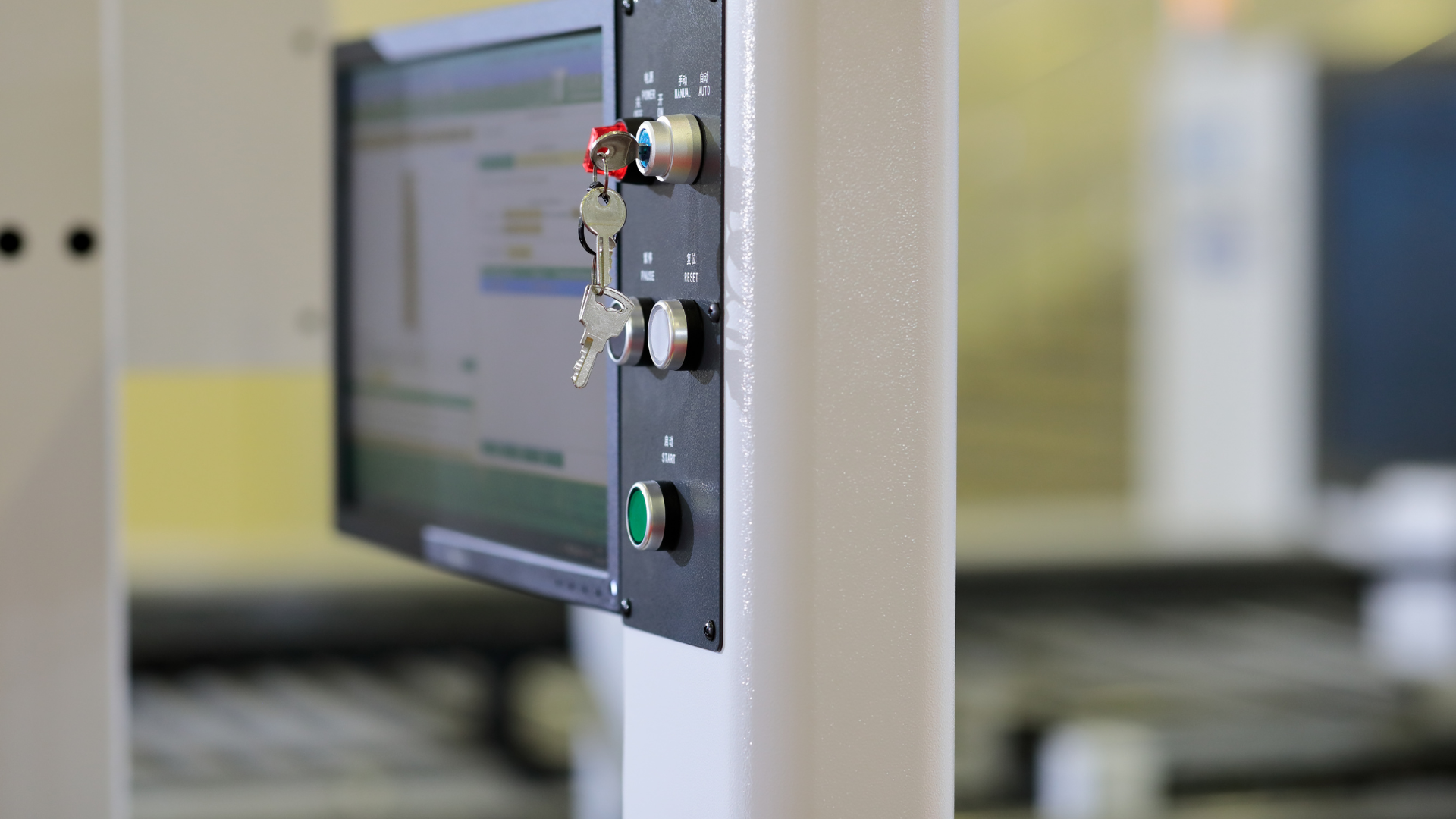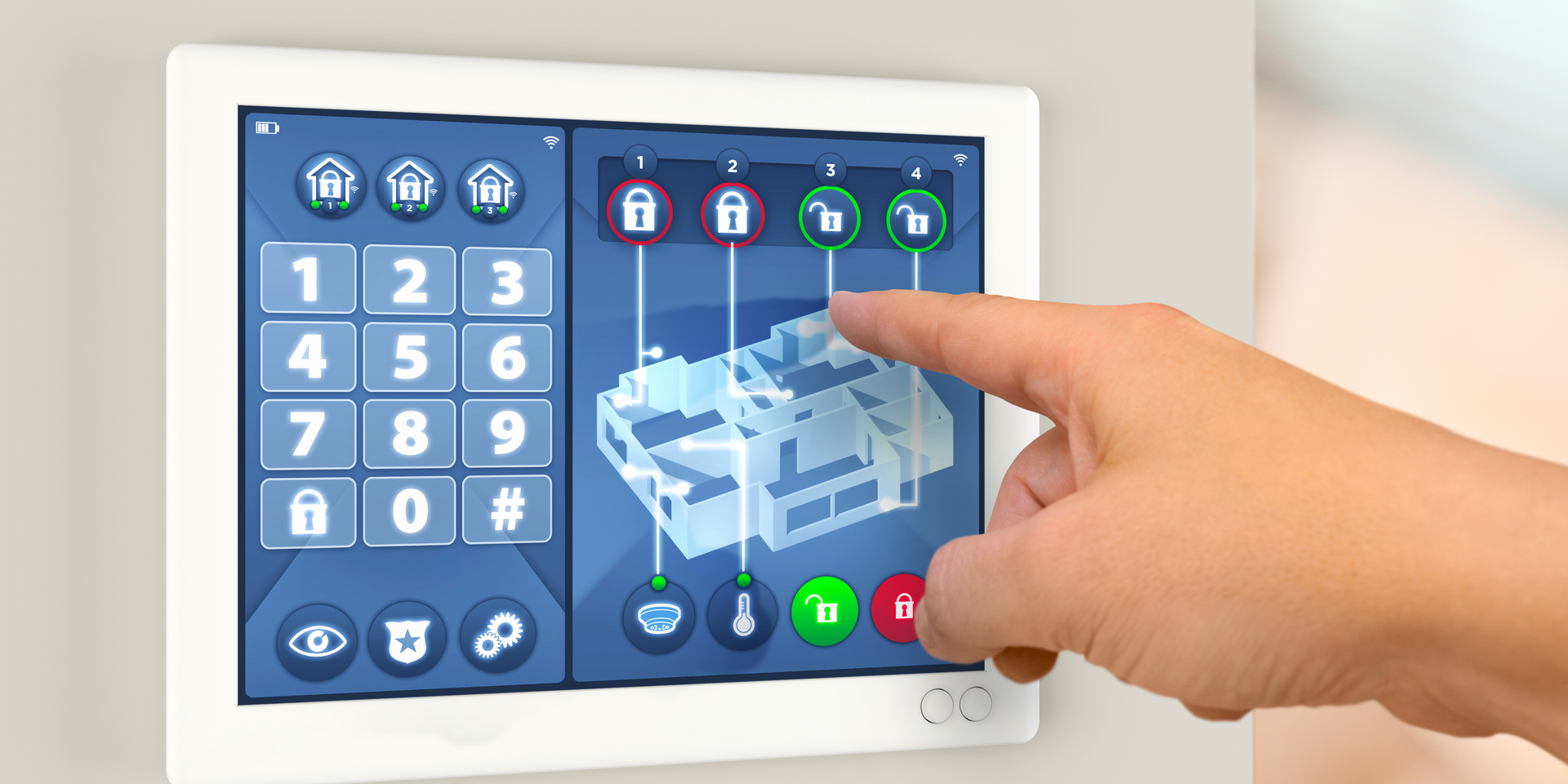What Is the Difference Between MES and SAP?
What Is the Difference Between MES and SAP?
Industrial MES systems and SAP (Systems, Applications, and Products in Data Processing) are both crucial tools in modern manufacturing, but they serve different purposes. MES, or Manufacturing Execution Systems, focus on real-time control and monitoring of production processes. They track materials, manage production schedules, and ensure quality compliance on the shop floor. In contrast, SAP is an Enterprise Resource Planning (ERP) system that manages broader business functions, including finance, supply chain, and inventory. While MES is specifically designed for manufacturing operations, SAP integrates data across the entire enterprise. Many companies use both systems together to gain detailed operational insights from MES and align them with SAP’s company-wide processes.
SAP MES
SAP MES (Manufacturing Execution System) combines the strengths of SAP’s enterprise resource planning with the real-time capabilities of an MES. By integrating SAP with MES, manufacturers can streamline their production processes while maintaining alignment with company-wide business operations. SAP MES offers real-time visibility into shop floor activities, such as production tracking, quality management, and material flow. This integration allows manufacturers to optimize resources, improve efficiency, and maintain compliance with industry standards. With SAP MES, businesses can gain detailed insights into both operational and financial data, enabling more informed decision-making and improving overall productivity.
SCADA MES Module
SCADA MES Module integrates Supervisory Control and Data Acquisition (SCADA) systems with Manufacturing Execution Systems (MES) to enhance industrial automation and production management. SCADA provides real-time data from the equipment and processes on the factory floor, allowing operators to monitor and control machinery. When combined with MES, the SCADA MES module bridges the gap between the operational level and higher-level business systems. This integration enables better visibility into production performance, real-time tracking of key metrics, and improved decision-making. By combining SCADA’s real-time monitoring capabilities with MES’s production management tools, manufacturers can achieve greater efficiency, reduce downtime, and enhance overall process control.
MES Software
A Manufacturing Execution System (MES) is a software solution that manages and monitors the production process on the shop floor in real time. It serves as a bridge between Enterprise Resource Planning (ERP) systems and the physical manufacturing environment. MES helps manufacturers ensure efficient production by providing tools for scheduling, tracking, quality control, and resource management. It gathers data from machines and operators, giving real-time insights into production performance, material usage, and equipment efficiency. With MES, companies can reduce downtime, improve product quality, and enhance overall operational efficiency, making it an essential tool for modern manufacturing.
Manufacturing Execution System
Manufacturing Execution System is a software solution that manages, monitors, and controls production processes on the shop floor in real time. It helps manufacturers track the progress of products through the production cycle, manage resources, ensure quality control, and optimize workflows. MES bridges the gap between production operations and higher-level business systems, providing real-time data on everything from material usage to machine performance. By offering detailed insights into manufacturing processes, MES enables companies to improve efficiency, reduce waste, and enhance overall productivity.

What Is The Difference Between MES and ERP?
MES ERP Meaning
MES (Manufacturing Execution System) is a software solution used to manage and control manufacturing operations on the shop floor in real time. It focuses on tracking production, managing workflows, ensuring quality control, and optimizing manufacturing efficiency.
ERP (Enterprise Resource Planning) is a comprehensive software system that integrates various business functions such as finance, human resources, procurement, and supply chain management. ERP provides a unified platform for managing and automating business processes across the entire organization, ensuring that all departments have access to the same data for improved decision-making and operational efficiency.
MES ERP Integration
MES ERP integration connects the real-time production management of a Manufacturing Execution System (MES) with the enterprise-wide functions of an Enterprise Resource Planning (ERP) system. This integration allows seamless data flow between the shop floor and business operations, ensuring that production activities like scheduling, material usage, and quality control are aligned with business processes such as inventory management, procurement, and financial planning. By integrating these systems, companies can improve efficiency, reduce manual data entry, and make better decisions, optimizing resources and enhancing productivity across the organization.
ERP System
An ERP system (Enterprise Resource Planning) is a comprehensive software platform that integrates and manages core business processes across an organization. It provides a centralized database that connects functions such as finance, human resources, procurement, supply chain management, and sales, allowing departments to access and share accurate, real-time information. By streamlining operations, reducing data silos, and automating routine tasks, an ERP system enhances efficiency, improves decision-making, and supports overall business growth. Organizations of all sizes use ERP systems to gain better visibility into their operations and to manage resources more effectively.
What Does MES Mean in SAP?
MES in SAP refers to the Manufacturing Execution System integrated within SAP’s enterprise software suite. MES in SAP is designed to manage and monitor production processes in real time, focusing on the shop floor operations. It helps track production orders, manage materials, ensure quality control, and optimize the efficiency of manufacturing processes. By integrating MES with SAP’s broader enterprise systems, companies can achieve seamless communication between production and higher-level business functions like inventory, procurement, and financial management, allowing for greater operational visibility and improved decision-making across the organization.
SAP MES Integration
SAP MES integration connects SAP’s enterprise resource planning (ERP) system with a Manufacturing Execution System (MES) to streamline and enhance production processes. This integration allows real-time data exchange between shop floor operations and higher-level business functions, enabling better coordination between manufacturing and areas such as inventory management, procurement, and finance. By integrating SAP with MES, manufacturers gain improved visibility into production performance, more efficient resource management, and the ability to make data-driven decisions, ultimately increasing productivity and reducing operational costs. The integration helps bridge the gap between production and business operations for a more cohesive and agile manufacturing environment.
SAP MES Training
SAP MES training provides professionals with the skills to effectively utilize SAP’s Manufacturing Execution System (MES) in managing real-time production processes. It covers key areas such as production scheduling, quality management, material tracking, and reporting, enabling participants to streamline manufacturing operations. The training also focuses on integrating SAP MES with broader SAP ERP systems, helping users understand how shop floor data aligns with business functions like inventory and finance. This equips individuals to implement and manage SAP MES solutions, improving operational efficiency and decision-making in manufacturing environments.
What is MES?
MES (Manufacturing Execution System) is a software solution that manages, monitors, and controls production processes on the shop floor in real time. It helps manufacturers track the progress of products through the production cycle, manage resources, ensure quality control, and optimize workflows. MES bridges the gap between production operations and higher-level business systems, providing real-time data on everything from material usage to machine performance. By offering detailed insights into manufacturing processes, MES enables companies to improve efficiency, reduce waste, and enhance overall productivity.
Manufacturing Execution System Software List
Here is a list of popular Manufacturing Execution System (MES) software used across industries:
- Siemens Opcenter
Formerly known as SIMATIC IT, Siemens Opcenter offers comprehensive MES solutions for production control, quality management, and manufacturing intelligence. - AVEVA MES
A versatile MES platform that provides real-time data collection, production optimization, and performance monitoring across manufacturing operations. - Rockwell Automation (FactoryTalk ProductionCentre)
This MES solution integrates with Rockwell's automation systems, providing tools for production tracking, quality control, and performance management. - SAP Manufacturing Execution
Part of SAP's enterprise software suite, SAP MES integrates seamlessly with ERP systems to provide real-time production insights and control. - Dassault Systèmes DELMIAworks
Formerly known as IQMS, DELMIAworks offers end-to-end MES capabilities, focusing on production management, quality control, and supply chain integration. - GE Digital (Proficy Plant Applications)
GE’s MES software helps manufacturers improve efficiency and quality through real-time production data analysis and process management. - Oracle Manufacturing Cloud
Oracle’s MES solution is cloud-based and provides detailed visibility into manufacturing operations, integrating with Oracle’s ERP for a unified platform. - Honeywell Forge for Manufacturing
Honeywell offers MES software that focuses on improving production performance, quality management, and energy efficiency. - Plex Manufacturing Cloud
A cloud-based MES designed for discrete manufacturing, providing real-time visibility into shop floor operations, inventory, and quality. - Epicor Advanced MES
Epicor’s MES focuses on production monitoring, resource planning, and real-time data collection to improve manufacturing performance.
These MES software solutions help manufacturers improve production efficiency, manage quality, and gain real-time insights into their operations.
Manufacturing Execution System PDF
A Manufacturing Execution System (MES) PDF typically refers to a document or guide that provides detailed information about MES software, its functionalities, and how it is implemented in manufacturing operations. These PDFs may include key concepts such as:
- Overview of MES and its role in managing and optimizing production processes
- Core functions of MES, including production scheduling, material tracking, quality control, and real-time monitoring
- Benefits of using MES, such as improved efficiency, reduced downtime, and better decision-making through data insights
- Integration with other systems like ERP (Enterprise Resource Planning) and SCADA (Supervisory Control and Data Acquisition)
- Case studies and real-world examples of MES implementations in various industries
- Best practices for selecting, implementing, and managing MES software in a manufacturing environment
Such PDFs serve as valuable resources for professionals looking to learn more about MES or for companies considering implementing MES solutions to enhance their production processes. They are often provided by MES software vendors, industry experts, or technical consultants

List of MES Software
Here is a list of popular MES (Manufacturing Execution System) software solutions:
- Siemens Opcenter
A comprehensive MES platform that supports production execution, quality management, and manufacturing intelligence. - AVEVA MES
Provides real-time production management, quality control, and performance optimization for a range of industries. - SAP Manufacturing Execution
Integrated with SAP ERP, it offers real-time visibility and control over shop floor operations. - Rockwell Automation (FactoryTalk ProductionCentre)
Focuses on tracking production performance, quality management, and regulatory compliance. - GE Digital (Proficy Plant Applications)
A flexible MES solution for discrete, process, and hybrid manufacturing, offering real-time production monitoring and process optimization. - Dassault Systèmes DELMIAworks
End-to-end MES capabilities for production management, with a focus on quality and supply chain integration. - Oracle Manufacturing Cloud
A cloud-based MES solution that integrates with Oracle ERP, providing detailed insights into manufacturing operations. - Honeywell Forge for Industrial
Provides MES functionality aimed at improving production efficiency, quality management, and overall plant performance. - Plex Manufacturing Cloud
A cloud-based MES that offers real-time shop floor visibility and integrates with broader business systems for operational efficiency. - Epicor Advanced MES
Offers real-time production monitoring and analytics, enabling manufacturers to optimize shop floor operations. - Wonderware MES (by AVEVA)
Focuses on performance and quality management, offering detailed production tracking and real-time data collection. - Apriso (by Dassault Systèmes)
A global MES solution that emphasizes production efficiency, quality, and supply chain synchronization. - Camstar MES (by Siemens)
A highly adaptable MES platform that helps in improving product quality and manufacturing process efficiency. - FlexNet MES (by Apriso/Dassault Systèmes)
Supports global manufacturing operations by providing insights into real-time production performance.
These MES solutions are widely used across various industries to enhance production visibility, streamline operations, and improve overall manufacturing efficiency
SAP Manufacturing Execution PDF
A SAP Manufacturing Execution PDF typically provides detailed information on SAP’s Manufacturing Execution System (MES) and its features. It serves as a comprehensive guide for understanding how SAP MES integrates with manufacturing processes to optimize production. Key topics often covered in such PDFs include:
- Introduction to SAP MES: Overview of the system, its role in managing real-time production, and its integration with other SAP modules such as ERP.
- Core Functionalities: Detailed descriptions of key features like production order management, material tracking, quality control, and performance monitoring.
- Benefits of SAP MES: Insights into how SAP MES improves operational efficiency, reduces production costs, and enhances quality management in manufacturing.
- Integration Capabilities: How SAP MES integrates with SAP ERP and other enterprise systems to provide seamless data flow and improve decision-making.
- Implementation Guidelines: Best practices for setting up and implementing SAP MES in a manufacturing environment.
- Use Cases: Real-world examples and case studies of companies successfully using SAP MES to optimize their production operations.
- Technical Requirements: Information on hardware and software requirements for deploying SAP MES.
These PDFs are valuable resources for businesses and professionals looking to implement or learn more about SAP’s MES capabilities, providing insights into how the system can help streamline manufacturing processes. They are typically available from SAP’s official website or through authorized SAP partners.
ERP vs MES vs SCADA
ERP vs MES vs SCADA represent three distinct systems used in manufacturing and industrial environments, each serving different roles:
- ERP (Enterprise Resource Planning):
- Scope: ERP is a comprehensive business management system that integrates various organizational functions like finance, human resources, supply chain, procurement, and inventory management. It provides a high-level overview of the entire company’s operations.
- Focus: ERP focuses on planning, resource allocation, and financial management across the enterprise.
- Example: SAP ERP, Oracle ERP.
2. MES (Manufacturing Execution System):
- Scope: MES is a shop floor management system that tracks and controls real-time manufacturing processes. It bridges the gap between the shop floor and business systems, providing detailed insights into production, quality, and efficiency.
- Focus: MES focuses on real-time production management, ensuring the effective execution of manufacturing operations, including work order management, material tracking, and quality assurance.
- Example: Siemens Opcenter, GE Proficy, SAP MES.
3. SCADA (Supervisory Control and Data Acquisition):
- Scope: SCADA is a system used for real-time monitoring and control of industrial equipment and processes, primarily in sectors like energy, utilities, and large-scale manufacturing. It collects data from sensors and devices on the production floor.
- Focus: SCADA focuses on controlling and monitoring physical processes like machine performance, temperature, pressure, and other operational data.
- Example: Wonderware, Ignition SCADA, AVEVA SCADA.
You might also like



